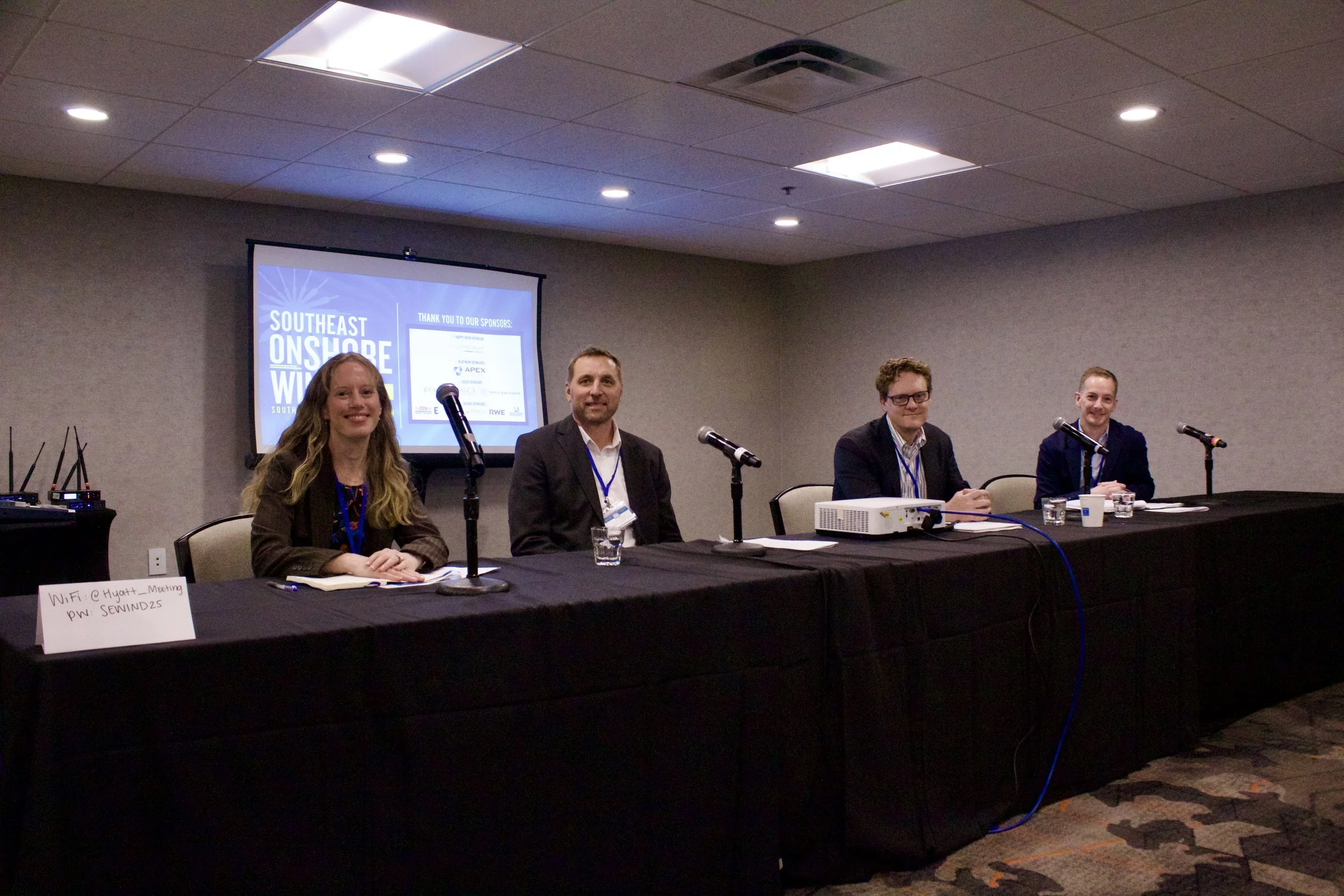Reflections from the 2025 Onshore Wind Summit
With five new onshore wind projects operating or under construction in the Southeast over the last couple of years, it was time to chart a path for the next tranche of wind. Last week, the Southeastern Wind Coalition brought together utilities, developers, service providers, researchers, and NGOs for our 2025 Onshore Wind Summit in Atlanta. Over two days of candid conversations about how we can continue to work together to make wind a vital part of the region’s energy mix, a powerful message emerged: building great wind projects in the Southeast isn't easy, but together we are more than capable of delivering them. The most challenging work is the work that creates the most value—for our region's energy security, for rural landowners and communities, and for meeting the energy demands of a more prosperous future.
Why Wind Matters in the Southeast
Despite the shifting political landscape, the case for wind energy development in the Southeast remains compelling:
Load growth demands a diverse energy portfolio. Utilities across the Southeast are planning for electricity loads to double by 2030, driven by artificial intelligence, data centers, and industrial expansion. No single generation source can meet this demand, and utilities are increasingly adopting an “all of the above” approach.. The backlog in gas turbine availability coupled with the increasing capital costs of building combined-cycle plants mean that the cost and speed to market of a new wind project is often more competitive than new gas. Wind projects complement the generation profiles of other energy sources to provide competitive, reliable, and affordable energy.
The economics of wind projects are continuously improving. Taller towers and larger turbines are unlocking wind resources in the Southeast that were not previously economical. We're seeing capacity factors for new projects that would have been unthinkable just a few years ago. Turbine manufacturers are innovating specifically for our region, unlocking new opportunities from Arkansas to Virginia.
The hedge against gas volatility is massive. The conversation about renewables often focuses on intermittency and overlooks a critical point: natural gas prices are increasingly volatile. Over the past two decades, we've seen repeated spikes in natural gas prices driven by rising global market demand, extreme weather events, and geopolitical conflict. Wind provides a crucial hedge against these price swings and insulates ratepayers from energy cost shocks.
Hyperscalers are demanding renewables. Corporate buyers like Google, Microsoft, and Amazon are investing in the Southeast and demanding renewable energy. These trillion-dollar companies want power quickly, and they're willing to pay a premium for the speed-to-market and carbon-neutrality that wind projects provide. Wind projects in the Southeast can deliver more attractive carbon values as compared to other areas of the United States that already have a greater build-out of renewable energy projects.
Collaboration is Needed to Address Obstacles
The summit explored several genuine obstacles we face in building wind projects in the Southeast:
Market development. Wind projects inside and outside of RTO territories operate under fundamentally different market structures. In competitive wholesale markets operated by RTOs, developers have the flexibility to sell to multiple buyers, making project development more viable. In non-RTO markets, the utility is the only customer and sets the terms. This creates a chicken-and-egg problem: utilities don't include wind in their portfolios, so developers don't prioritize those territories. Meanwhile, without developer activity, utilities lack the rationale and motivation to justify wind investments.
Transmission infrastructure. Aging transmission infrastructure is compounding the market challenge. Developers are responsible for paying for transmission upgrades for individual projects, and an aging transmission grid can make upgrades for specific projects prohibitively expensive. Long-range planning to improve the overall capacity of the energy grid is needed, requiring political will and collaboration among regulators and utilities across multiple states.
Community acceptance and local siting. Across multiple panels and discussions, panelists acknowledged that wind energy projects live or die on the local level. Organized opposition is becoming more sophisticated, and misinformation can spread rapidly if it takes hold in a community. Too often, local governments react to wind project proposals with hastily drafted regulations or moratoriums. Proactive education and thoughtful ordinance development are needed before specific projects are proposed. As one panelist bluntly put it: if you don't have a community engagement plan in place before you start leasing land, you're already ten years behind.
The Future of Wind Energy in the Southeast
As we look ahead, several uncertainties remain:
What will happen with renewable energy tax credits? The OBBA accelerates the phase-out of renewable energy tax credits by next summer. However, these tax credits have a history of uncertainty and last-minute extensions. Developers are prioritizing projects likely to qualify for tax credits through 2030.
How much load growth will actually materialize? AI and data center expansion are creating unprecedented demand for power, but uncertainty remains about how much of this load growth will materialize. In addition, how will rapid technological advancements reduce the future power needs of AI model training and deployment?
The developers, utilities, associations, researchers, and advocates working on wind energy in the Southeast aren't naive to these obstacles and uncertainties. They are committed to charting the path forward by doing the work right: engaging communities early, choosing sites carefully, partnering with trusted voices, and proving through successful projects that wind energy brings meaningful benefits to communities in the Southeast. As one panelist pointed out, the story of wind energy in the Southeast hasn't been written yet, and that is an exciting opportunity.




